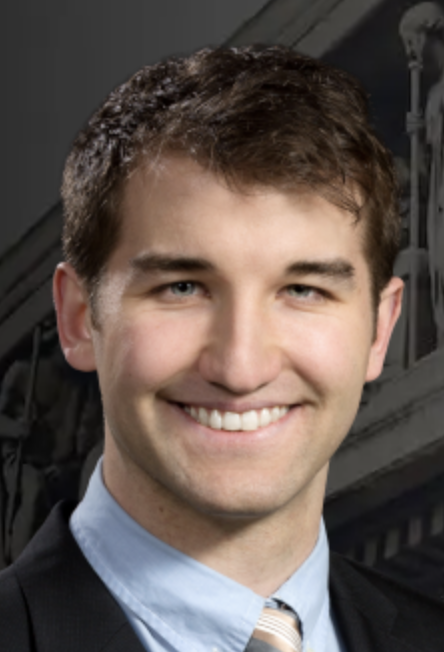Industry Insights
December 23, 2024
Wickert: Undecided or Imponderable Issues Subrogation Professionals Face
- National
- - 0 shares
One of the characteristics of multistate or nationwide subrogation experienced by claims professionals, lawyers and judges alike is the frequency with which we run into subrogation issues or questions that seemingly have no clear answers.

Lee R. Wickert
Quite often, we receive uneducated opinions, best advice or likely answers to these issues, but there are no clear-cut case decisions on point and no solid precedent to guide us in dealing with these irresolute and/or nascent issues. This could be true even when there are significant amounts of subrogation dollars hanging in the balance.
Built into the DNA of subrogation professionals is the notion that there is an answer to every legal and factual situation they run across; it’s simply a matter of discovering it. But as the years tick by, we soon realize that there are lots of situations where there simply isn’t an answer, and we must rely on our experience, training and wits to craft an argument in favor of a position we must take on behalf of a subrogated insurance company.
Legal precedent, also known among lawyers as stare decisis, refers to the principle that courts should follow the decisions made in previous rulings when resolving similar legal issues. This system ensures consistency, stability and predictability in the law. When a higher court makes a ruling, lower courts are generally bound to follow that decision in future cases involving the same or similar facts and legal principles. Precedent allows for the development of a cohesive body of law, where legal rules evolve gradually based on past decisions, providing clarity to litigants, legal professionals and the public.
However, not all legal questions have clear answers based on precedent. A “matter of first impression” arises when a legal issue has not been addressed by existing case law or statutory interpretation, meaning no prior court has ruled on that specific question. These situations occur when new facts, technologies or societal changes create novel legal issues that have not been foreseen or governed by earlier rulings. In such cases, courts are required to analyze the facts, interpret relevant statutes and consider analogous cases to reach a decision. While judges may look to existing principles of law and draw analogies from related cases, the absence of direct precedent means the court must forge new legal pathways, often influencing the future direction of the law.
Legal issues that come up often will usually have precedent to govern them. Issues that come up less frequently might not. Because subrogation, on average, involves more nuanced, less frequently encountered issues and smaller amounts of money than personal injury damages and would require the investment of manpower, attorneys’ fees and time to appeal and run through our civil justice system’s appellate gantlet, they are often not appealed and therefore remain “undecided” while other legal questions that are encountered more frequently have more precedent to guide them.
Sometimes, when a subrogation principle or rule is applied over and over, it is assumed that it represents established legal precedent or principles when, in fact, it does not. For example, many insurance professionals assume that if a state employs or recognizes the made whole doctrine, the insured in a subrogation claim must be totally reimbursed for its out-of-pocket deductible and any uninsured losses before a carrier can subrogate.
Unfortunately, this oversimplistic view or application of the made whole doctrine is not just erroneous; it results in reduced subrogation recoveries for carriers across the country. While the specific law involved may change from state to state, the consensus is that the made whole doctrine does not give an insured an affirmative right or cause of action against its insurer to be made whole beyond the payment of the insurance policy proceeds involved. Rather, the made whole doctrine may be used only as a defense by insureds to protect the insured’s direct recovery from a tortfeasor where the insured also lays claim to a limited amount of third-party proceeds based on subrogation.
When a workers’ compensation lien is claimed and the attorney for the employee challenges certain workers’ compensation payments, whether or not certain payments properly constitute recoverable elements of a statutory lien is a highly debated question.
Payments may include case management costs, medical bill audit fees, independent medical exam (IME) fees, expert fees, rehabilitation benefits, third-party vendor costs, nurse case management fees, workers’ compensation attorneys’ fees and the like. Plaintiffs’ attorneys will argue that these are not “benefits” like medical expenses or lost wage indemnity payments.
The payments such as those listed above are merely forms of overhead that cannot and should not be subrogated. Surprisingly, these issues have been decided in only a handful of jurisdictions. Judges like things that fit neatly into legal categories and clearly established rules. Where such things are not available, the best argument usually wins. For that reason, subrogation professionals are often left to craft their own explanations and arguments as to why these payments should be reimbursed by an employee when he or she makes a third-party recovery.
Frequently, a legal issue will have firm and clear precedent in a handful of states but is unaddressed in all the others. In these situations, we have some guidance and a basis from which to make an argument in the undecided states. But until the question is appealed and becomes legal precedent, the answer is truly unknown. For example, whether or not a subrogated automobile insurance carrier must pursue the insured’s deductible along with the subrogation amount and what portion, if any, of the insured’s deductible should be reimbursed to the insured if it is pursued is undecided in 21 states. Alaska has not yet decided if a workers’ compensation carrier can seek reimbursement of its lien from uninsured and/or underinsured payments made by the employer’s or employee’s auto policy to the employee.
Alaska has also not addressed the issue of whether it can seek reimbursement from a medical malpractice settlement. California, Arkansas, Georgia and 25 other states have not answered that question with regard to legal malpractice recoveries. Few people understand whether or not a future credit is allowed to a workers’ compensation carrier when the third-party recovery represents only noneconomic damages.
Property insurers subrogating in states that strongly adhere to the made whole doctrine are often pleased to learn that in some states, the subrogation clause of their insurance policy can modify the doctrine and allow subrogation even when the insured is not made whole. Yet that question still remains unanswered in states such as Iowa and Michigan. Whether subrogation is successful is often determined by how persuasive subrogation counsel can be.
Whether or not a landlord’s insurance company can subrogate against a tenant whose negligence caused damage to the property has no answer in Iowa and Montana. How can this be? Do property insurance carriers not like money? Have they not subrogated in those two states up until now? Of course, they have. But those particular issues have simply not made it into the appellate process and spit out on the other side as established precedent. There remain questions about which subrogation professionals must dance and creatively argue that they have such a right.
In some instances, the complexities of no-fault insurance leave us scratching our heads when it comes to subrogation questions that seemingly have no answer. Take New York, for example. In New York City, the Taxi and Limousine Commission (TLC) requires a higher personal injury protection (PIP) limit of $200,000 for all licensed TLC vehicles, which is in addition to the basic $50,000 PIP limit required by state law, for a total of $250,000. If a workers’ compensation carrier wants to engage in loss transfer arbitration to recover against a livery vehicle, is the first $50,000 exempt, or is it $250,000? Plaintiffs’ attorneys have been telling our clients that the limit is actually $250,000 because there was a livery vehicle involved and regulations in New York require that limit of coverage. The truth is that the answer to this question is another of subrogation’s imponderables. There is no answer.
When faced with subrogating the unknown without any guidance or precedent to help us, the winner is usually the one who can craft the most persuasive argument. Subrogation counselors with extensive experience in all 50 states are usually better equipped to draw parallels to the laws of states where the issue has been decided. It is in these situations where it is best to remember the words of Mark Twain: “Whatever you say, say it with conviction.”
Lee R. Wickert is a partner attorney in the Austin, Texas, branch office of Matthiesen, Wickert & Lehrer law firm in Hartford, Wisconsin. This blog post is reprinted with permission.
Advertisements
Columns
- Kamin: Comp Costs Hit Highest Combined Ratio Since 2001, WCIRB Says 11/05/25
- Montgomery: DIR to Blow $1.25M on Another Questionable Comp Study 11/03/25
- Wroten: California Sets the Standard as New Study Links Workplace Injuries to Heat Exposure 10/29/25
- Kamin: En Banc Clarifies Policy Reporting Requirements 10/27/25
- Gelman: PTSD-Stricken Officer's Disability Claim Denied 10/22/25
- Snyder: TAG a Structured Settlement Broker 10/17/25
- Snyder: New Medi-Cal Rules Can Affect Your Settlement 10/15/25
- Fish: Guarding Against PTSD Overdiagnosis 10/10/25
- Montgomery: DWC's MPN List Disappears Yet Again 10/08/25
- Ferguson: A Tribute to Thomas Chapman Lynch 10/06/25
- Gelman: Workers' Compensation Lien Secures Damages 10/03/25
- Paduda: Hot Stuff From WCRI 09/29/25
- Gelman: Trial Judge Deference Prevails 09/26/25
- Zachry: Injured Workers Aren't Always Lying 09/24/25
- Kamin: The Difference Between 'Sudden and Extraordinary' and 'Violent Act' Exceptions 09/22/25
- Wickert: State Supreme Court Clarifies Rules for Suing Nonsubscriber Employers 09/19/25
- CAAA: AI Raises Concerns in Workers' Comp System 09/17/25
- Kamin: PEO Registration Bill Likely Headed to Newsom's Desk 09/15/25
- Montgomery: Stop Blaming Doctors for High Costs 09/12/25
- Snyder: Classic Advice Reminders 09/10/25
Now Trending
- Workers' Compensation News
-
Calif. Worker
Fails to Raise Triable Issue of
Fact for Retaliation…
Posted on Oct 30, 2025
-
Calif. Appeals
Court Says SCIF Performance Bonus
Dispute Is Subject to…
Posted on Oct 31, 2025
-
Calif. Costco
Among Companies Cited for Alleged…
Posted on Nov 3, 2025
-
Calif. Proposed
Rules Would Allow Electronic Filing
of All Case…
Posted on Oct 31, 2025
-
Ntl. Editorial:
Injured Workers Have Less Medical
Privacy Than…
Posted on Nov 3, 2025
-
Ala. Split Court
Upholds Award for Worker Who Passed
Out While Operating…
Posted on Nov 4, 2025
-
Mich. Bills
Propose ABC Test, Benefit Increase,
Mandatory Mediation and New…
Posted on Nov 3, 2025
-
Ntl. National
Safety Council Says Government
Shutdown Puts Workers at…
Posted on Oct 30, 2025
-
Texas Texas Mutual
Appoints New…
Posted on Nov 5, 2025
-
Iowa Meatpacking
Worker's Degloving Qualifies as
Schedule…
Posted on Nov 6, 2025
Jobs
Upcoming Events
Nov 7, 2025
WIMAH 2025 Workers’ Compensati
Join Hawai'i’s premier workers’ comp event for expert insights, top-tier networking, and standout …
Mar 25, 2026
SAVE THE DATE-CAREER & INTERN
Career Services at California Lutheran University presents the Career & Intern Expo 2026, which wi …
Social Media Links
c/o Business Insurance Holdings, Inc.
Greenwich, CT 06836




No Comments
Log in to post a comment